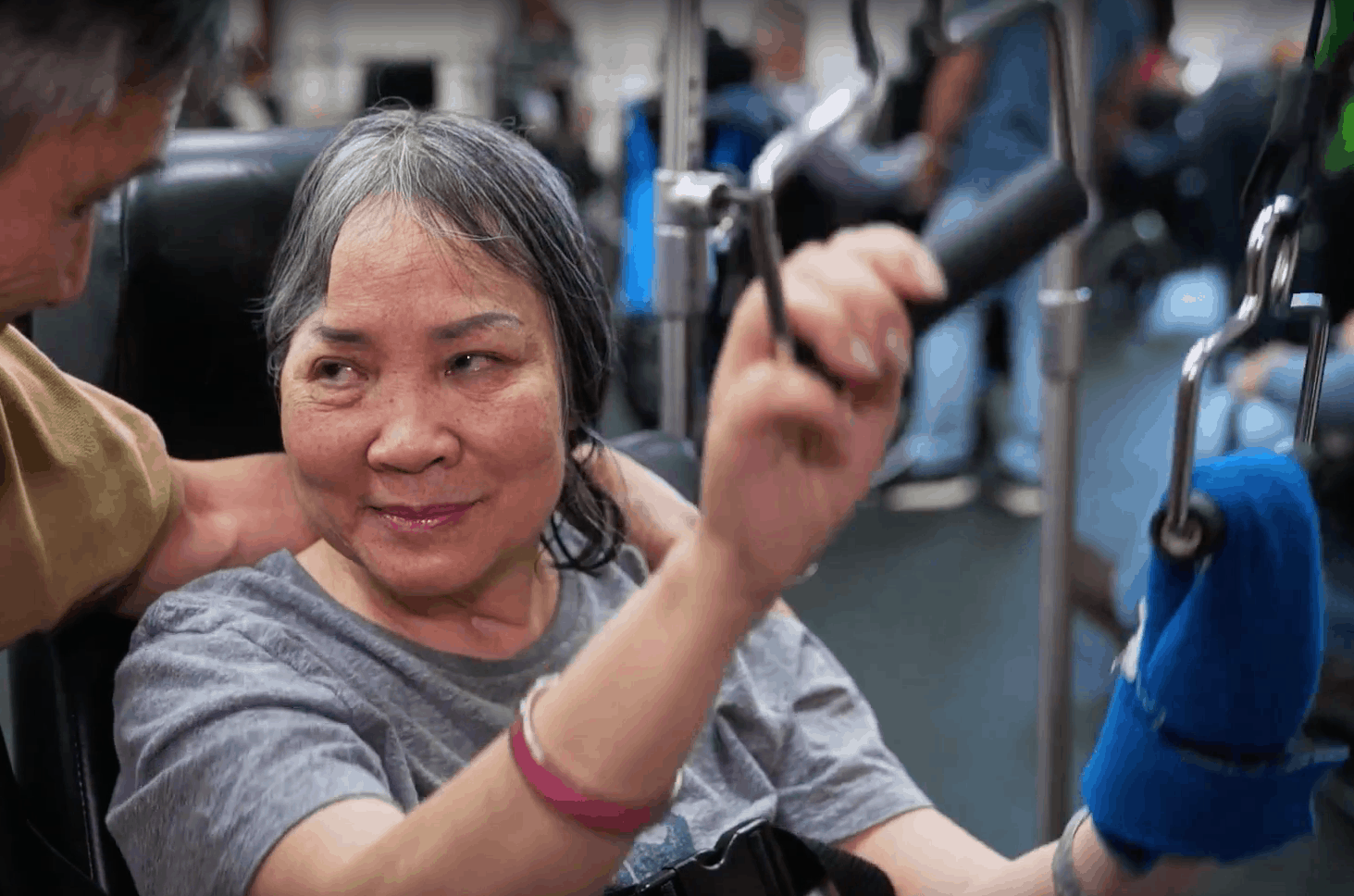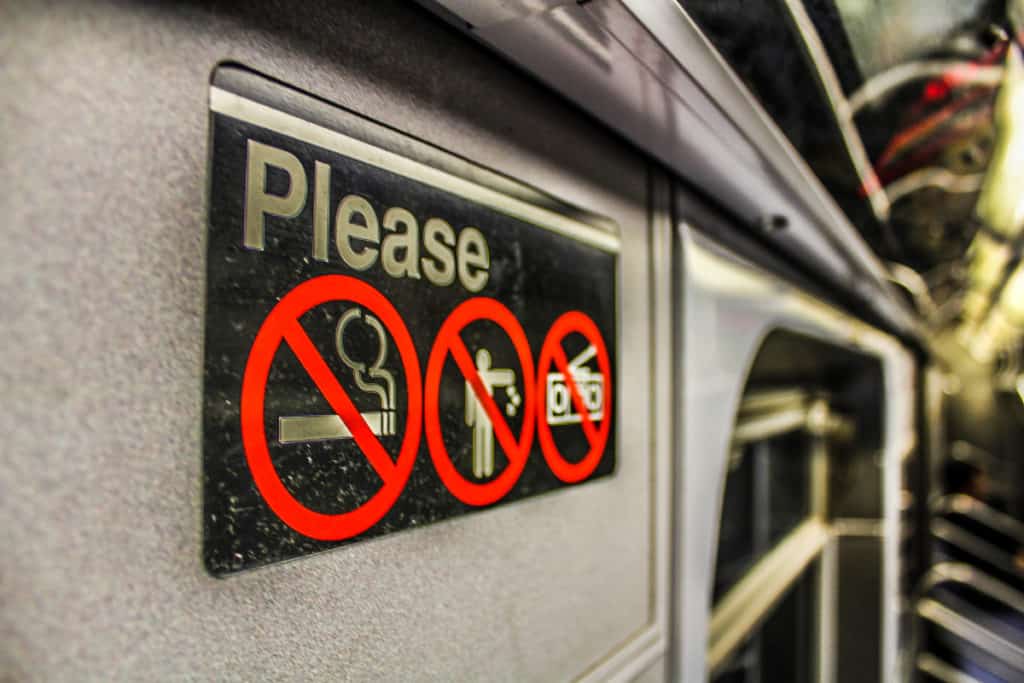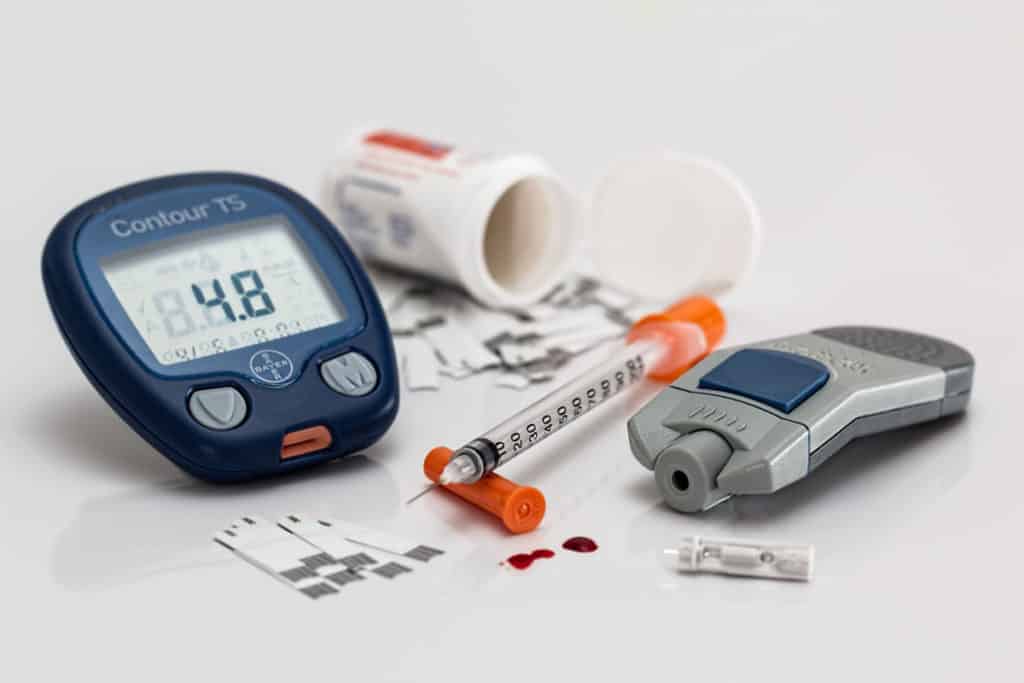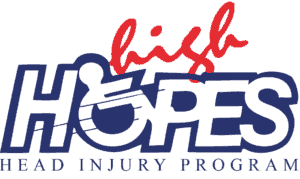2953 Edinger Ave
Tustin, CA 92780
(949) 733-0044
for emergencies call 911
Tustin, CA 92780
for emergencies call 911
Stroke is the leading cause of serious, long-term disability in the United States
High Hopes is a nationally recognized 501c3 Charitable organization dedicated to helping those who have suffered a stroke recover their lives. High Hopes has been dedicated to getting results far above expectations for over 44 years.
Here is Susan’s Story:
Suzanne Beck is an accomplished chemist who managed her testing lab along with her husband. They both were doing important work.
She sustained an extensive stroke leaving her wheelchair-bound.
Suzanne started at High Hopes in August; She began to make significant improvements on the first day. Suzanne is determined to improve, works extremely hard, attends regularly, and is very thankful for her success achieved at High Hopes.
Suzanne Beck is walking for the first time using a Quadwalker!

the blood supply to part of your brain is interrupted or reduced, depriving brain tissue of oxygen and nutrients. Within a short time, brain cells start to die.
A stroke is a medical emergency. Prompt treatment is crucial. Quick action can minimize brain damage.
if you notice any signs of symptoms of a stroke, even if they seem to fluctuate or disappear.
CALL 911 or your local emergency number right away. Do not wait every minute counts. The longer a stroke goes untreated, the greater the potential for brain damage and disability.
Approximately 80 percent of strokes are ischemic strokes, Ischemic strokes occur when the arteries to your brain become narrowed or blocked, causing severely reduced blood flow.
A thrombotic stroke occurs when a blood clot (thrombus) forms in one of the arteries that supply blood to the brain. A clot may be caused by fatty deposits (plaque) that build up in arteries and cause reduced blood.
An embolic stroke occurs when a blood clot or other debris forms away from your brain – commonly in your heart – and is swept through your bloodstream to lodge in narrower brain arteries. This type of blood clot is called an embolus.
Hemorrhagic stroke occurs when a blood vessel in your brain leaks or ruptures. Brain hemorrhages can result from many conditions that affect your blood vessels. These include:
A less common cause of hemorrhage is the rupture of an abnormal tangle of thin-walled blood vessels (arteriovenous malformation). Types of hemorrhagic stroke include:
Types of hemorrhagic stroke include:
A subarachnoid hemorrhage is commonly caused by the bursting of a small sack-shaped or berry=shaped aneurysm. After the hemorrhage, the blood vessels in your brain may widen and narrow erratically causing brain cell damaged by further limiting blood flow.
Sometimes known as a small or mini stroke – is a temporary period of symptoms similar to those you’d have in a stroke. A temporary decrease in blood supply to part of your brain causes TIA’S, which may last as little as five minutes.
Like an ischemic stroke, a TIA occurs when a clot of debris blocks blood flow to part of our nervous system – but there is not permanent tissue damage and no lasting symptoms.
Seek emergency car even if your symptoms seem to clear up. Having a TIA puts you at greater risk of having a fill-blown stroke, causing permanent damage later. If you have had a TIA, it means there is likely a partially blocked or narrowed artery leading to your brain or a clot source in the heart.
Risk Factors
Many factors can increase your stroke risk. Some factors can also increase your chances of having a heart attack. Potentially treatable stroke risk factor include:
AGE
People age 55 or older have a higher risk of stroke.
RACE
African-Americans have a higher risk of stroke than do people of other races.
SEX
Men have a higher risk of stroke than women. Women are usually older when they have strokes, and they are more likely to die of strokes than are men.
HORMONES
use of birth control pills or hormone therapies that include estrogen, as well as increased estrogen levels from pregnancy and childbirth.
A stroke can sometimes cause temporary or permanent disabilities, depending on how long the brain lacks blood flow and which part was affected. Complications may include:
You may not be able to completely prevent a stroke but you can minimize the risk of stroke.

Controlling high blood pressure (hypertension). This is one of the most important things you can do to reduce your stroke risks.

Exercising, managing stress, maintaining a healthy weight and limiting the amount of sodium and alcohol you eat and drink can all help to keep high blood pressure in check. In addition to recommending lifestyle changes, your doctor may prescribe medications to treat high blood pressure.

Lowering the amount of cholesterol and saturated fat in your diet. Eating less cholesterol and fat, especially saturated fat and trans fat, many reduce the plaque in your arteries. If you cannot control your cholesterol through dietary changes alone, your doctor may prescribe cholesterol-lowering medication.

Quitting tobacco use. Smoking raises the risk of stroke.

Controlling diabetes. You can manage diabetes with diet, exercise, weight control and
medication.

Maintaining a healthy weight.
. Eating a diet rich in fruits and vegetables
. Exercising regularly
. Drinking alcohol in moderation, if at all
. Treating obstructive sleep apnea (OSA)
. Avoiding illegal drugs.
Preventive medications
. Anti-platelet drugs. Platelets are cells in your blood that form clots.

Over the years High Hopes has helped countless students recover from stoke. If you like to learn more about our program please take a look at the rest of our website and please contact us if you still need more information.
© 2024 HIGH HOPES
Made with ❤ by The Point Solutions